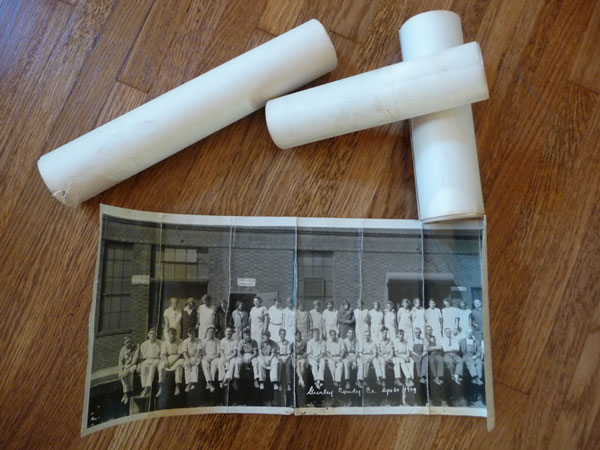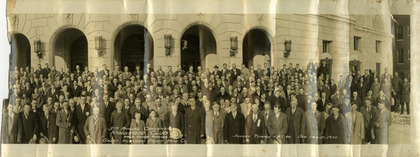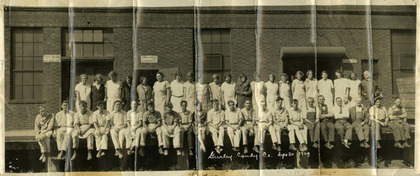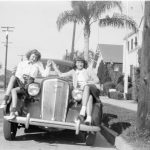Bigger treasures are not necessarily better, but they are a bigger challenge. My grandmother saved everything, and I am slowly and carefully scanning and storing each photo, letter, and document. That is, except the growing stack of oversize items that are too large for my flatbed scanner. I have hesitated to send them off to the Never-Neverland of a mail-order scanning service. . . who knows where they would go or how they would be cared for?
That is, until I met the founders/scanners from ScanDigital at the Southern California Genealogy Society Jamboree last June. Matthew Stone, Vice-President, Operations, was answering questions in the exhibit hall and explained the service and procedures, emphasizing the LOCAL operation. ScanDigital’s offices are located in El Segundo, the family beach-town known as one of L.A.’s best kept secrets. This didn’t sound quite so scary. I was assured that all scanning was done on-site, not sent off to a foreign country (and, I didn’t even know that some places did that!)
 Heirloom photos stored tightly rolled, now cracked and creased
Heirloom photos stored tightly rolled, now cracked and creased
When I came across a cache of large panorama photos from the 1920s and 30s, I decided it was time to try ScanDigtal. Since my son and daughter-in-law actually live in El Segundo and offered to drop off the photos for me, it didn’t seem like I was sending my precious heirlooms off into the boonies. Katie was asked to use the lobby computer and register an account. She left the photos and within days we received an email that the order was complete; she returned to pick up the photos and image CD. Pretty nice daughter-in-law!
Images were scanned at 600dpi as JPGs,as requested. As I do not plan to print the photos or greatly enlarge any portion, I felt the standard ScanDigital resolution would probably be fine. The scans came out clear and straight, but it was obvious my photos had major problems. Years spent tightly rolled resulted in creases, cracks, and tears; these will need some restoration work.
 Great Western Paint Mfg. Co. 5th Convention Kangaroo Club, K.C., Mo. Jan. 14-15, 1930
Great Western Paint Mfg. Co. 5th Convention Kangaroo Club, K.C., Mo. Jan. 14-15, 1930
ScanDigital was careful not to cause further damage to the photos, and as a result some images bear slight shadows where the scanning technician held back from flattening the photograph to the glass. When I called to ask about this, ScanDigital offered to rescan those images, but I will wait to do so until (and if) I am able to relax the photos.
 Employees of the Gurley Candy Co., Sept 20, 1929
Employees of the Gurley Candy Co., Sept 20, 1929
My conversations with ScanDigital left me very curious about their facility and procedure and I asked if I could bring in my next photos personally and take a tour.
I imagined a large warehouse full of Kinko’s-size scanners or maybe a front office and a fleet of vans who rushed orders to an nearby warehouse where the “big” equipment was manned by an army of busy technicians. There would be a low hum from the machines and everything would be sterile and white.
I think they were a bit surprised by my request, but said to just “come on by.” So, I did.
. . . to be continued with details of The Family Curator’s tour of ScanDigital and a Special Savings Offer.







My mom has a panoramic WWI military group photo with my grandfather in it. Would love to know what you find out about relaxing the rolled photo, as we have the same problem.
I just framed a WWI military photo taken in Coblenz, Germany in 1919 that had been rolled up. The frame shop did a beautiful job of attaching it to foamboard. Before framing he took digital sections of the print so that other family members can have a print. Framed it in museum quality glass for a total of $378.00.Very pleased!
I am always curious about the operations side of a business. I hope they let you take photographs for your article. I’m really looking forward to this!
I love panorama photographs. Difficult to come by and very expensive. I have an enormous old photograph from the National Bison Range.
-fM